If you’ve ever been to Bransdale Mill, you will have seen the old barn propped up for years by scaffolding to prevent collapse. This has been necessary since the Public Footpath passes directly below the north end gable.
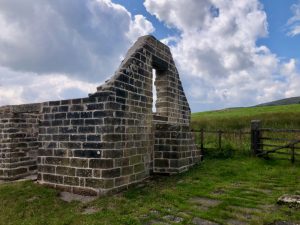
Now the barn is stable at last, its scaffolding gone. And a fine sight it is. One can now wander where once horses were stabled and the miller’s cart was housed. I can see the value of preserving these old buildings, no doubt about it. But as I took it all in, I couldn’t help but feel a certain emptiness, a manicured tidiness that seemed to drain away its soul.
It’s a remarkable achievement to have stabilised the structure. But now, it wears an air of neatness that borders on the clinical. I yearn for a touch of nature’s grace to reclaim its surfaces. Lichen spreading gently across the stonework, softening the harsh lines of the new pointing and wall headings. Plants finding their way into the crevices of the flagstones, giving the place the air of rustic history.
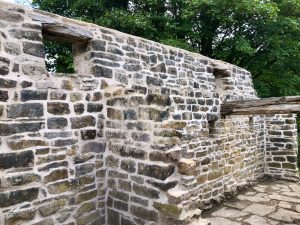
The barn was probably constructed using soft lime and clay mortar. The passage of time, coupled with the relentless whims of frost and weather, had taken its toll, causing this delicate mortar to slacken. As a result, the walls showed signs of becoming unstable, a loss of integrity, a conspicuous bulging, and a risk of outright collapse. The typical recourse involves a delicate operation of repointing and consolidation, matching the mortar with the original as closely as possible.
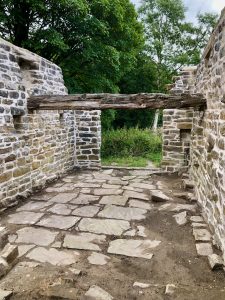
In this barn, there have been three distinct phases of building work. The earliest part, dating back to the 18th century, served as a stable with a loft above. In the year 1817, the miller at the time, William Strickland, expanded the building by adding a cart-shed and more lofts. Sometime before 1820, a pair of pigsties were added, though they were later removed to make room for further extension to the 18th-century section. In the mid-19th century, a lean-to was added, but this was later partially demolished1‘MNA145299 | National Trust Heritage Records’. 2020. Nationaltrust.org.uk <https://heritagerecords.nationaltrust.org.uk/HBSMR/MonRecord.aspx?uid=MNA145299> [accessed 20 July 2023].
Looking at the south-west wall, there is obvious considerable bulging. This has led to the insertion of two iron ties with plain cruciform spreaders at some time. Furthermore, two buttresses have been added. Originally shaped like quarter circles, these have since collapsed. Marshy ground borders up to this wall, which probably accounts for this instability.
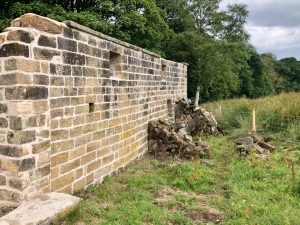
Inside, there is a timber beam and a few lintels, showing signs of considerable decay. I do hope that these timbers have been well taken care of and protected.
As crucial as preservation efforts may be, an overly fervent focus on preserving ruins risks eradicating their aura, wiping away the very characteristics that render them exceptional. On the whole, I think the National Trust has struck the right balance at Bransdale Mill. In time, perhaps, the hand of nature will lend its touch, breathing life back into this manicured sanctuary.
- 1‘MNA145299 | National Trust Heritage Records’. 2020. Nationaltrust.org.uk <https://heritagerecords.nationaltrust.org.uk/HBSMR/MonRecord.aspx?uid=MNA145299> [accessed 20 July 2023]
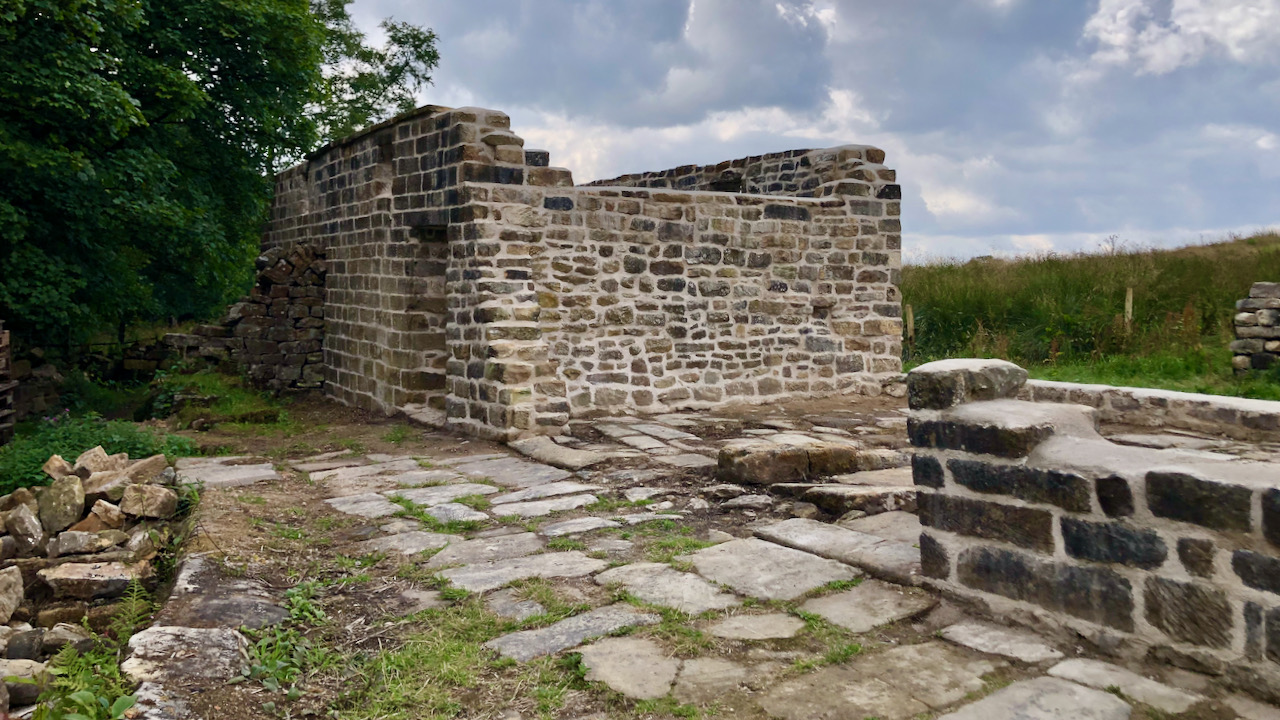
Leave a Reply